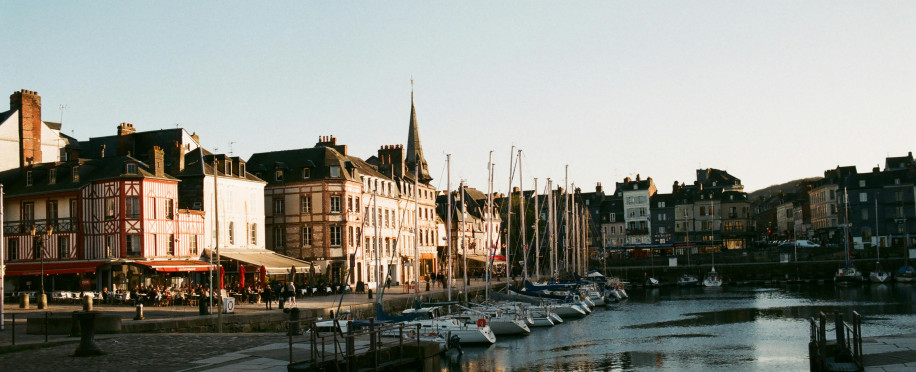Copyright © 2025 lmitac.com All Rights Reserved. Contact - Terms and Conditions - Privacy Policy - Quality Policy - Become an instructor - Vacancies - Sitemap
London Maritime Academy is a trade name for London Premier Groupversion: 2.9.0
London Maritime Academy is a trade name for London Premier Group

Posted on : 4/6/2024, 10:51:56 PM
Our marine environment is rich with resources and wealth; however, all the maritime industries, transportation, and human activities are impacting the balance of ocean ecosystems, which makes the need to set marine protected areas (MPAs) more than necessary.
Moreover, marine protected areas (MPAs) exist in ocean and sea waters depending on the designated specifications and requirements to achieve the best ocean conservation with all its habitats.
This article will cover quality information about marine protected areas in international waters and global regulations in the MPAs to protect marine resources, with types and benefits.
The main definition of marine protected areas (MPAs) comes from the database of the International Union for the Conservation of Nature (IUCN): “Any area of intertidal or subtidal terrain, together with its overlying water and associated flora, fauna, historical and cultural features, which has been reserved by law or other effective means to protect part or all of the enclosed environment”
In other words, the called marine protected areas (MPAs) are designated areas in oceans, seas, estuaries, or large lakes that are legally established, protected, and managed by governments, international organisations, or local communities to achieve ocean and wildlife conservation. Under various legal frameworks and partnerships, including national laws, regional agreements, and international conventions to protect marine life and ecosystems.
There are special regulations governing activities and services within each marine protected area (MPA) depending on the attached factors of that discrete MPA. Such as the MPA designation, management objectives, ecological sensitivity, and local stakeholder input.
This means that the activities allowed in marine protected areas (MPAs) can differ from non to a wide range of activities depending on the MPA-specific management objectives, defined regulations, and level of public conservation.
Non-extractive recreational activities (swimming, snorkelling, scuba diving, boating, and wildlife watching).
Sustainable fishing activities (recreational fishing and commercial fishing).
Scientific ocean research and monitoring.
Educational activities.
Cultural and historical activities.
Sustainable tourism and ecotourism.
Navigation and maritime commerce transportation.
According to the level of allowed activities within the marine protected areas (MPAs), we can divide these dedicated areas into four main types:
No-Take Zones MPA: These are protected marine areas, where people are allowed to visit, yet all extractive activities, including fishing and resource harvesting, are restricted, allowing vulnerable marine ecosystems to recover and thrive without overfishing or human interference.
Multiple-Use MPA: These marine protected areas (MPAs) allow for a variety of human activities such as fishing, underwater diving, recreational activities, and scientific research, however, they must follow strict and careful protection regulations and zoning.
Fully Protected Reserves MPA: These MPAs serve as comprehensive ecological sanctuaries for marine life to flourish undisturbed. With the highest level of protection by prohibiting all forms of human and industrial extractive activities.
Marine Refuges: This type of MPA aims to protect a specific species from various dangerous impacts. Moreover, in this MPA, scientists design, establish, and manage the best conditions for that specific species to help them live without direct threats.

The created marine protected areas (MPAs) have so many great benefits in marine conservation efforts as they are the main tool to protect and monitor the life in the ocean and ecosystems.
Furthermore, these special highly protected areas are required to give threatened ocean areas the time and space to thrive, develop, and survive.
Yet, according to the maritime commercial practices courses UK, these protection areas when well-studied will not impact the commercial practices, rather than empower the economy of coastal cities and protect and conserve the national ecosystem.
Marine protected areas provide real protection for diverse habitats, animals, and species, preserve genetic ocean diversity, and ensure the resilience of marine ecosystems against environmental changes.
This substantial benefit is highly appreciated, and it is achievable in each MPA, with no impacts on industrial maritime activities and positive restoring impacts on the environment.
Although the concept of marine protected areas (MPAs) aims to create human-free spaces to protect the ocean environment, yet, they are benefiting from advances in maritime technology to improve the quality of water and habitat life.
Moreover, the protection from human and industrial activities can act as a natural filter, allowing the water to remove extra nutrients and pollutants from the water, thus, supporting a healthy marine environment.
On all its levels the marine protected areas safeguard cultural heritage sites and traditional practices, preserving the rich cultural and historical significance associated with different marine environments.
As the common restrictions, in the MPA project, address and protect the components of the protected parks from pollution.
By providing refuge areas and reproducing grounds for marine creatures, marine protected areas (MPAs) support, in one way or another, the recovery and sustainable management of fish stocks, even the rare ones.
And this is so important because it will contribute to the long-term viability of fisheries and the livelihoods and economics of coastal communities dependent on marine resources.
With all the growth of maritime industries and investments the need for marine protected areas is more than necessary to save the life in the ocean, the overall environmental and climate balance, and surrounding coastal areas.
Thus, the executive MPA strategy is taking a vast interest in all the environmental and sustainable efforts in the world.